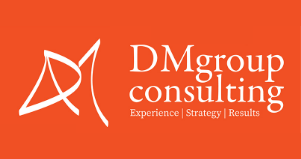Strategic planning is key for nonprofits to succeed. It helps organizations set their goals and figure out the best ways to achieve them. Without a good plan, it’s easy to get off track and miss important opportunities. That’s why having a strategic plan is so important. It helps everyone stay focused and work together towards the same goals.
Creating a strategic plan might seem hard, but it can be done in simple steps. The process involves setting clear goals, understanding your current situation, developing strategies, and keeping track of your progress. Each step is important and helps build a strong plan that will guide your nonprofit for the next few years.
In this blog, we will go through easy steps to create a strategic plan for your nonprofit in 2024. Whether you are starting from scratch or updating an existing plan, these steps will help you outline what needs to be done. This way, you can focus on making a big impact with your nonprofit work. Let’s dive into the details and get started on building a roadmap for your success.
Setting Clear Goals and Objectives
The first step in strategic planning is setting clear goals and objectives. Goals are the big things you want to achieve, while objectives are the steps you take to get there. Having clear goals helps everyone know what they are working towards.
Start by thinking about your nonprofit’s mission. What do you want to accomplish in the next year or five years? Write these down as your main goals. For example, if you run a food bank, a goal might be to serve 1,000 more families this year.
Next, break these big goals into smaller, actionable objectives. These should be specific, measurable, achievable, relevant, and time-bound (SMART). For the food bank example, an objective could be to partner with five new grocery stores by the end of the year.
Setting clear goals and objectives gives your team direction. It makes it easier to create plans and take action. Plus, having SMART objectives means you can measure your progress and see how well you are doing. This first step lays the groundwork for the rest of your strategic plan.
Conducting a Situational Analysis
Once you have your goals and objectives, the next step is to understand your current situation. This helps you see what you have and what you need to achieve your goals. A situational analysis looks at both internal and external factors that can affect your nonprofit.
First, look inside your organization. List your strengths and weaknesses. Strengths might include dedicated volunteers or strong community support. Weaknesses could be things like limited funding or lack of staff. Knowing your strengths helps you build on them, while understanding weaknesses shows where you need to improve.
Next, look outside your organization. List opportunities and threats. Opportunities might include new grants or a growing community need. Threats could be more competition from other nonprofits or changes in government funding. This external analysis helps you spot chances to grow and avoid potential problems.
Combining these insights gives you a clear picture of your starting point. This is sometimes called a SWOT analysis (Strengths, Weaknesses, Opportunities, and Threats). It helps you plan better because you know what you have to work with and what challenges you might face. Conducting a situational analysis is a key step in making sure your strategic plan is realistic and grounded in reality.
Developing Actionable Strategies
Having clear goals and a situational analysis helps you move to the next step: developing actionable strategies. Strategies are the plans you create to achieve your goals. These need to be practical and feasible, so you can easily put them into action.
Start by brainstorming different ways to reach your objectives. For example, if your goal is to serve more families in a food bank, think about various strategies. You might consider expanding your volunteer base, increasing donations, or building partnerships with local businesses.
Next, prioritize these strategies based on your strengths and opportunities. Select the ones that align best with what your nonprofit can realistically accomplish. Remember to break these strategies down into specific tasks. Assign these tasks to team members and create a timeline. For example, if you decide to increase donations, one task might be to launch a social media campaign by the end of the month.
Document your strategies clearly so everyone knows what to do. This step turns your goals into action plans, making it easier to move forward and see results. By developing actionable strategies, you create a roadmap that guides your nonprofit toward achieving its mission.
Monitoring Progress and Making Adjustments
After you start implementing your strategies, it’s important to monitor your progress. Keeping track of how things are going helps you see what’s working and what needs to change. This step ensures that you stay on the right path and make adjustments as needed.
First, set up a system for tracking your progress. This can be as simple as a checklist or more detailed, like using project management software. Regularly review your progress against your objectives and timeline. Celebrate milestones and recognize team members for their contributions.
Next, gather feedback from your team and any other stakeholders. Ask what’s going well and where they see challenges. This can provide valuable insights that you might not have noticed. Use this feedback to make adjustments to your strategies. For example, if a fundraising event didn’t meet expectations, discuss what went wrong and how you can improve.
Be flexible and open to change. Sometimes, you need to revise your strategies completely due to unexpected situations. The key is to keep testing, learning, and adapting. Monitoring progress and making adjustments ensures that your nonprofit remains effective and responsive to both internal and external changes.
Conclusion
Strategic planning is a crucial process for any nonprofit. By setting clear goals and objectives, conducting a situational analysis, developing actionable strategies, and monitoring progress, your organization can work more effectively toward its mission. Each step builds on the other, ensuring that you have a comprehensive plan that addresses your unique needs and challenges.
A good strategic plan keeps everyone focused and aligned with the nonprofit’s goals. It provides a roadmap for tackling challenges and seizing opportunities. This ongoing cycle of planning, action, and review helps maintain momentum and fosters continuous improvement.
Ready to take your nonprofit’s strategic planning to the next level? Contact DM Group Consulting today, and let us help you craft a plan for success in 2024 and beyond. Our expert team is here to guide you every step of the way.




